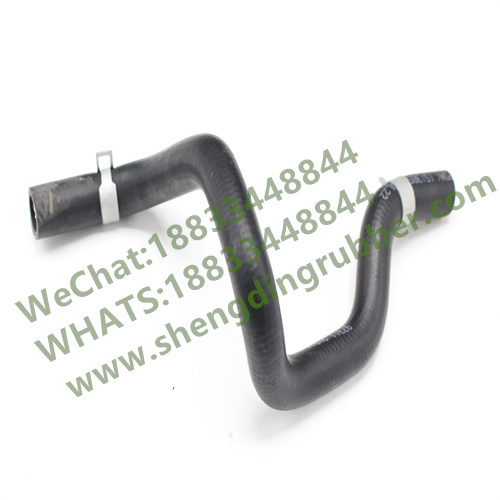The Future of Automotive Electrical Components: Innovations and Insights
Release Time:
Aug 25,2025
In the automotive industry, particularly within the realm of electronic and electrical components, it is crucial to stay informed about the latest developments and innovations that can enhance vehicle performance and safety. Keyword "24589673" serves as a reminder of the growing importance of advanced technology in automotive applications. As vehicles become smarter and more connected, understandi
In the automotive industry, particularly within the realm of electronic and electrical components, it is crucial to stay informed about the latest developments and innovations that can enhance vehicle performance and safety. Keyword "24589673" serves as a reminder of the growing importance of advanced technology in automotive applications. As vehicles become smarter and more connected, understanding the underlying technologies and trends is essential for professionals in this field.
One of the most significant trends affecting automotive electrical components is the increasing integration of advanced driver-assistance systems (ADAS). These systems rely heavily on sophisticated sensors, cameras, and electronic control units (ECUs) to enhance vehicle safety and improve the driving experience. As a result, manufacturers are focusing on developing high-quality electronic components that can withstand extreme conditions and ensure reliability.
Moreover, the rise of electric vehicles (EVs) has transformed the automotive electronics landscape. With a shift towards electrification, there is a growing demand for efficient power management systems and battery management technologies. Understanding how to design and implement these systems is critical for professionals looking to innovate within the automotive sector. The optimization of energy consumption and integration with renewable energy sources are key areas of focus for automotive electronic component designers.
In addition, connectivity features, such as vehicle-to-everything (V2X) communication, are becoming increasingly vital. This technology allows vehicles to communicate with each other and with infrastructure, enhancing safety and traffic management. Professionals in the automotive electronics field must keep abreast of the protocols and standards that govern these communications to ensure proper integration and functionality.
Furthermore, as consumer expectations evolve, there is a growing emphasis on user experience in vehicle design. This has led to an increased focus on infotainment systems, which combine entertainment, navigation, and communication technologies. As a professional in the automotive electronics domain, understanding user interface design and software development for these systems can provide a competitive advantage.
Lastly, the importance of regulatory compliance cannot be overstated. Professionals must be aware of the various safety standards and regulations that govern automotive electronic components, ensuring that products meet the required specifications for performance and safety.
In summary, the automotive industry is experiencing rapid changes driven by advancements in electronic and electrical components. By staying informed and adapting to these trends, professionals can position themselves for success in this dynamic environment. The keyword "24589673" highlights the importance of continuous learning and innovation in automotive electronics, paving the way for future advancements in the industry.
One of the most significant trends affecting automotive electrical components is the increasing integration of advanced driver-assistance systems (ADAS). These systems rely heavily on sophisticated sensors, cameras, and electronic control units (ECUs) to enhance vehicle safety and improve the driving experience. As a result, manufacturers are focusing on developing high-quality electronic components that can withstand extreme conditions and ensure reliability.
Moreover, the rise of electric vehicles (EVs) has transformed the automotive electronics landscape. With a shift towards electrification, there is a growing demand for efficient power management systems and battery management technologies. Understanding how to design and implement these systems is critical for professionals looking to innovate within the automotive sector. The optimization of energy consumption and integration with renewable energy sources are key areas of focus for automotive electronic component designers.
In addition, connectivity features, such as vehicle-to-everything (V2X) communication, are becoming increasingly vital. This technology allows vehicles to communicate with each other and with infrastructure, enhancing safety and traffic management. Professionals in the automotive electronics field must keep abreast of the protocols and standards that govern these communications to ensure proper integration and functionality.
Furthermore, as consumer expectations evolve, there is a growing emphasis on user experience in vehicle design. This has led to an increased focus on infotainment systems, which combine entertainment, navigation, and communication technologies. As a professional in the automotive electronics domain, understanding user interface design and software development for these systems can provide a competitive advantage.
Lastly, the importance of regulatory compliance cannot be overstated. Professionals must be aware of the various safety standards and regulations that govern automotive electronic components, ensuring that products meet the required specifications for performance and safety.
In summary, the automotive industry is experiencing rapid changes driven by advancements in electronic and electrical components. By staying informed and adapting to these trends, professionals can position themselves for success in this dynamic environment. The keyword "24589673" highlights the importance of continuous learning and innovation in automotive electronics, paving the way for future advancements in the industry.
Key words:
What Else Might You Learn?







